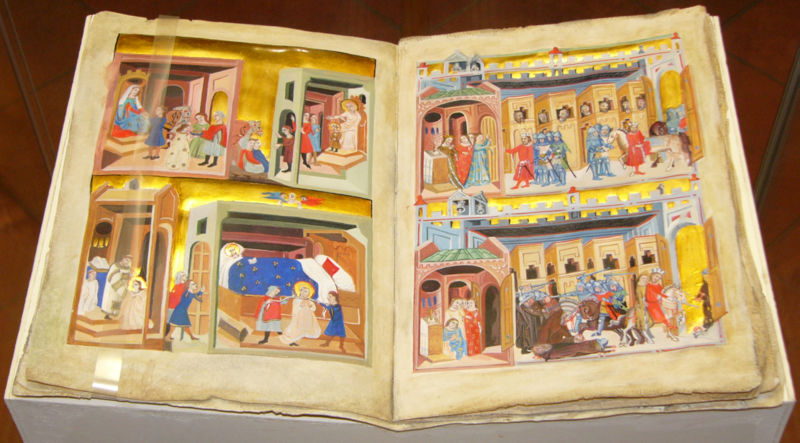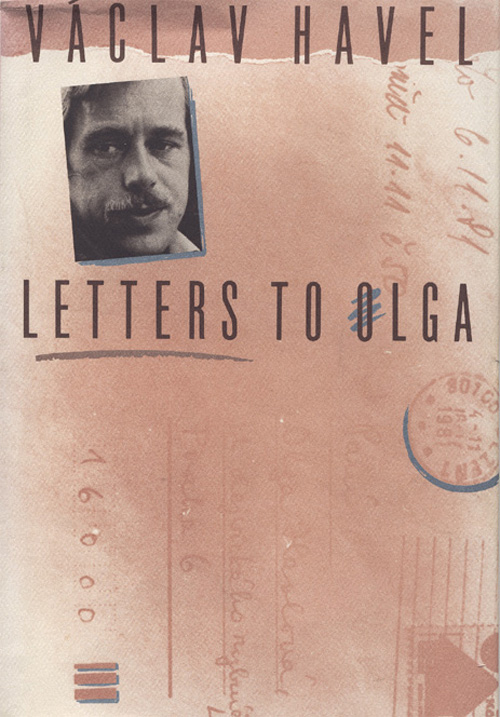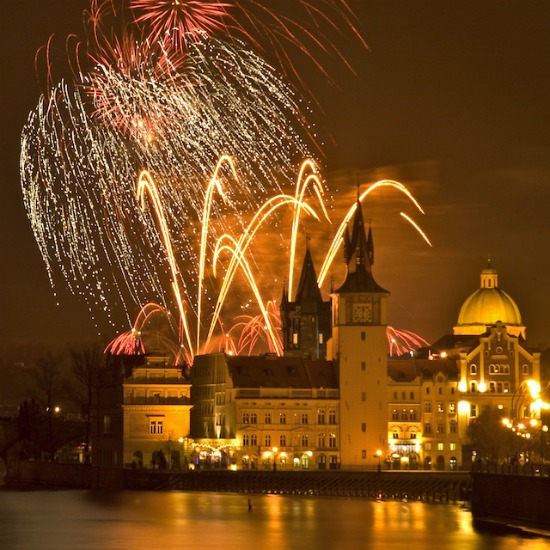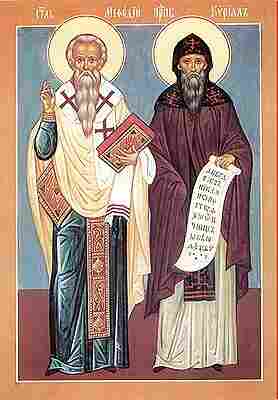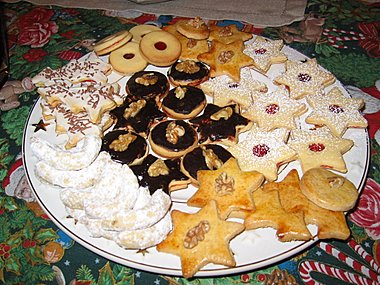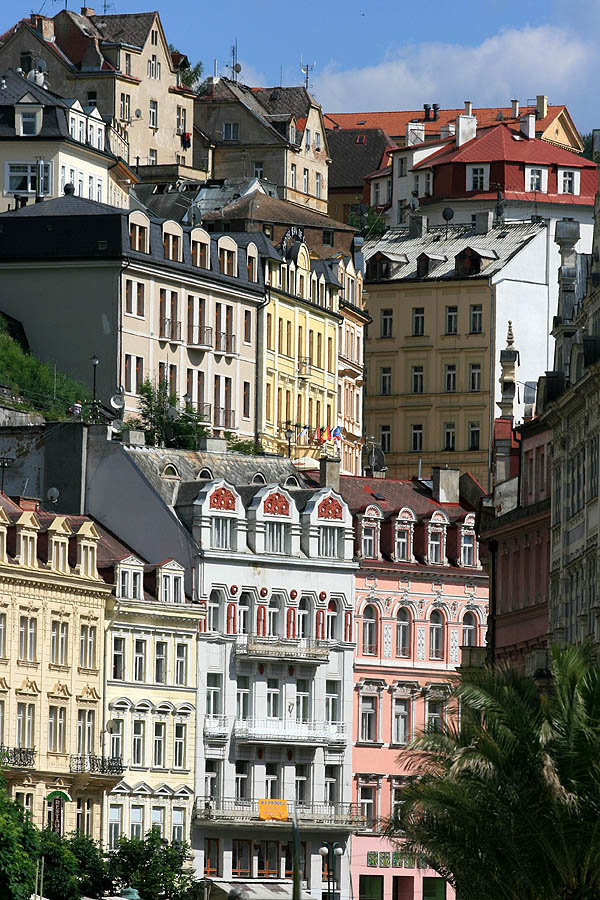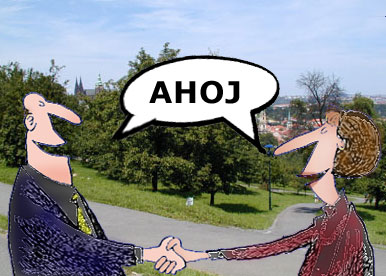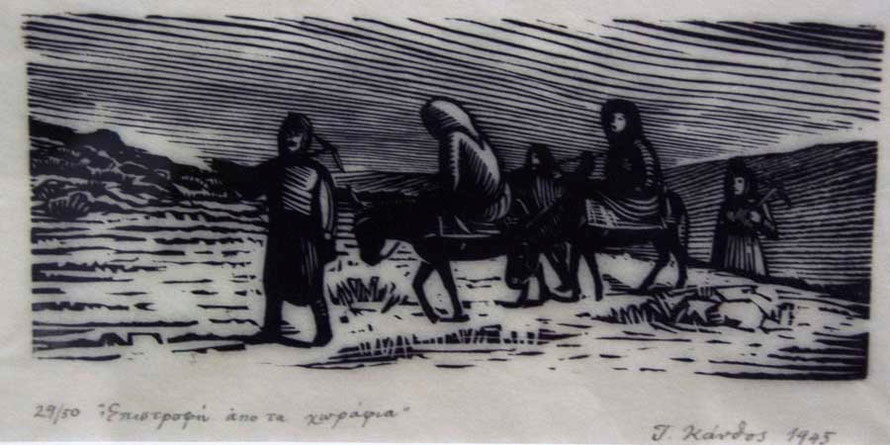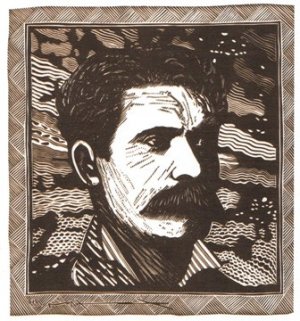So, this has
been a huge weekend for me. I
bought a new printer so that I can print off the first copy of the book I’ve
written that I’ve been working on for ten years off and on. However, I forgot
to check the price of ink cartridges before buying it, and of course I chose
one of the most expensive ones to replace. I really have a knack for picking
out the most expensive things. It’ll all work out, I suppose. I may learn how
to refill ink myself. The other thing is that I celebrate 34 years of
continuous breathing tomorrow. And what better birthday dinner than the food
from the Czech Republic?
The first
thing I got started on was the kolaches. A kolache is like a sweet roll with a
well in it filled with a variety of fillings. There are a couple different kinds,
both savory versions using meats and cheeses as well as fruit-filled ones. I’m making the fruit versions today,
and I let my kids each choose a flavor, so we’re making apricot, cherry, and
pear kolaches. (The pear ones aren’t something that I gathered is traditionally
authentic, but since I did find some pear preserves at the store that I
ABSOLUTELY had to have, I’m hoping it’ll be good.) To start off with, we made
the dough, and the kids got to learn how to make lemon zest. This dough needs a
ton of resting time: the first rest is 2-3 hours. I pushed it back to 1 ½ -2
hours. After a second kneading, it rested for another hour. Then I cut my dough in half and made
two balls, letting it rest for 10-15 minutes. Now it’s time to actually do
something. I rolled out the dough to where it’s about a ½” – ¾” thick and used
a large cup to cut out the circles. I was able to make 15 of them, which is
good if I have three flavors. I let it rest for another half-hour (although the
recipe called for an hour). Now comes the fun part: with my thumb, I made a
well in the middle. I took store-bought honey-flavored cream cheese and spread
it in the bottom of the well. Then
I put a nice sized dollop of preserves on top. I made an egg wash and brushed the tops of each kolache. Then I
made what’s called posipka, which is sugar, flour, cinnamon and butter that has
been cut into it. The posipka is then sprinkled on top of each pastry. It only bakes for about 12-14 minutes (or
until golden). My husband said it
tastes like it came from a professional bakery. I tried one of the cherry ones,
and it tasted like a mini cherry pie.
The cream cheese and fruit preserves combination somewhat remind me of
how I like my scones. But what I like about these is that because the filling is
sweet, the sweetness in the pastry itself is subdued. If both are sweet, then it’s too much. These were the perfect combination. I absolutely love these!! And they must
be good: my husband has had four already.
 |
| Kolaches, from left to right: cherry, apricot, pear |
For the
meal, I made what’s considered the national dish: Vepro-Knedlo-Zelo. It’s roast pork, dumplings, and red
cabbage sauerkraut. I started with the roast, because it takes the longest
time. I put the roast in my
casserole dish and sprinkled diced onions on and around it as well as sprinkled
some sea salt and caraway seeds on top. I had never had caraway seeds on
anything other than bread, so I was really interested to see how it meshed with
the pork. Then I put water in the
dish so that it covered about a quarter of the way up the roast. Then I put it
in the oven and forgot about it for two hours. I liked the caraway taste on it.
I thought it blended well and gave it a somewhat earthy overtone to the
slow-cooked pork.
 |
| Roast pork with salt, onions, and caraway seeds. The flavor was incredible! |
Once it came
out, I took a cup of the drippings and used it in lieu of water in making pork
gravy. I didn’t do anything fancy
here; I just used a package of no-MSG pork gravy from Meijer. But it was still tasty.
The next
part of this was to make the sauerkraut.
I normally associate this as being made with green cabbage, but this
recipe calls for red cabbage. I
actually sautéed some diced onions in the pot first and then added my shredded
cabbage in the pot along with a cup of water and some salt. I let it cook for
about a half hour, then I drained what water was left, added 3 Tablespoons each
of white wine vinegar and sugar and mixed well. The recipe called to throw just
a tad of flour in the pot and stir, letting it cook down for about 10-15 more
minutes. The flavor was phenomenal. I loved the mix of sweet and sour. The kids weren’t so much fans of it,
but my husband and I thought it was the best stuff on earth. (Besides the
kolaches.)
 |
| My daughter asks, "Why do they call it red cabbage when it's purple?" |
Lastly, I
made the dumplings. Now here was yet another lesson in how what I’m making is
not how the recipe is making me think it SHOULD look. I just couldn’t get my dough to set up for the dumplings. I
mixed my water, milk, eggs, and salt together and added the flour, and then I
added my croutons too. (I actually
made my own croutons by tearing up some cheap hamburger buns and toasting it in
the oven while I was making the roast.) But it just wasn’t coming together and
I already used the last of my flour. The recipe made me think that it should be
almost elastic like bread dough, form it into an oblong loaf and cut it with a
string before placing them in boiling water. (My husband even made me a device
to cut it, using random pieces of metal from old projects and upholstery
thread. He’s so ingenious.) So,
what I did was just take my sticky dough and drop it into the boiling water as
is. It still tasted very good
along with the rest of the meal, and even better with the gravy on it.
 |
| One of the best comfort meals ever. AND one of the best birthday meals ever. |
And I can’t
forget the drink I’ve been enjoying all weekend: Pilsner Urquell. The Czech city of Plzen is home to pilsner
beers, and it’s their national drink.
I myself am a fan of pilsners; I’ve bought Pilsner Urquell several
times. Pilsners tend to have a lighter flavor, but depending of the country, it
can vary. I think where I live, we have more access to German, Dutch, and
Belgian pilsners, with this one as the only Czech beer available. I suppose if
I lived in an area with more Czech and Slavic populations, I might have more
choices.
 |
| Kinda sad there's only one more of these in my refrigerator. |
I loved
everything about this meal, from the six hours it took to make the kolaches to
the strange-looking dumplings I made.
For a country that I’ve been somewhat interested in for years, it
certainly didn’t disappoint me, and in fact, I’m fascinated with it now. I
think I can add Prague to my list of cities to retire to. Yesterday I spent many hours catching
up on Dvorak, and I just got notice from my library that “Letters to Olga” by
Václav Havel is being held for me. And I also must note that this is the last
country that starts with C. It’s like the ending of a good chapter. I’ve had a lot of good food from C
countries. But I’m looking forward
to the D countries (there are only five).
So, here’s to endings and beginnings and happy birthdays.
Up next:
Democratic Republic of the Congo


